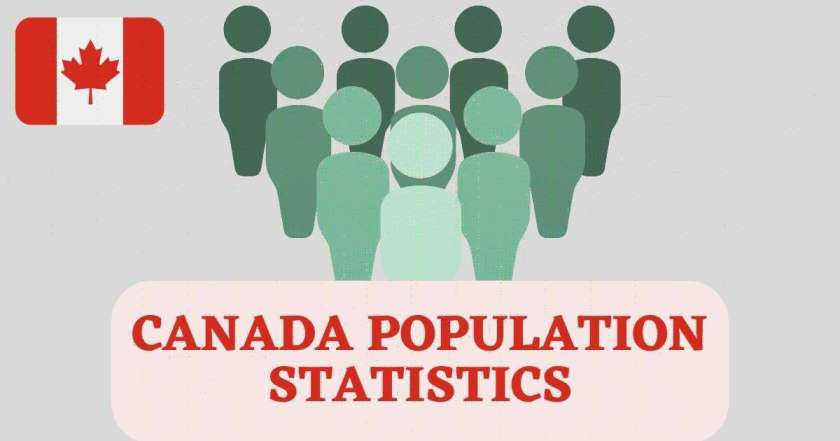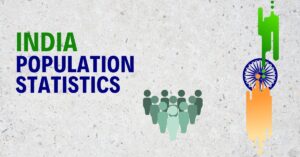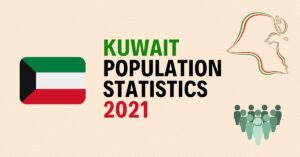One of the biggest challenges facing Canada in the next few years will be dealing with the population growth that comes from immigration and natural increase (the difference between the number of births and deaths). And yet, no one seems to be talking about it—what’s going on? What are the challenges? What does it mean for Canadians? Let’s take a look at what we know so far about Canada’s population in 2024.
Whether you’re planning on moving to Canada in the future or have an immediate need to know what the population of Canada is right now, it can be hard to find accurate and up-to-date information about this subject.
The year 2024 has approached, and the Canadian government has already begun to predict the country’s population then. Last year, the government released a report that revealed some important facts about Canada’s population in 2024. For example, the number of seniors is expected to have increased by almost 50%, while the number of working-age Canadians will decrease.
Current Population of Canada 2024
How many people live in Canada? What will the Canadian population look like in 2023? These questions are at the forefront of anyone’s mind who’s considering buying land and making property investments in this country, as well as anyone considers immigrating to Canada. To give you an idea of what we can expect over the next decade, let’s have a look at what we know so far about current Canada population.
What is the current Canada population in 2024?
According to the data provided by Statistics Canada (StatCan) website, the current Population of Canada in 2024 is estimated to be 38,929,902.
According to the United Nations, the Population of Canada in 2024 is estimated to be 38,450,000, with a growth rate of 0.76%. The Male population in Canada is 19.11 million and the Female population is 19.34 million.
Here’s what we know so far about Canada’s population statistics in 2024.
We’re not sure exactly what the population in Canada will be in 2024, but we do know that it will be a lot higher than it is now. In 2017, the Canadian population was 36 million people. That number is expected to grow by an estimated 13 million people by 2023. There are two main reasons for this projected increase in population: fertility and immigration. With fertility rates increasing from 1.6 children per woman in 2005 to 1 percent in 2010 and immigration rates increasing from 250,000 immigrants per year in 1990 to 310,000 today, there has been a significant boost to the Canadian population over time.
The population demographics have shifted as well, with seniors representing 17% of the total population, while they only represented 8% thirty years ago. In some ways this is good news because it means that a lot more people will be able to retire than would have before (a trend many countries across the world are also experiencing). On the other hand, there will also likely be fewer younger workers available to fill positions, which will lead to increased competition for jobs.
Canada Population Statistics 2024
The population of Canada has grown steadily over the past several years, and that trend should continue until at least 2024, according to the latest data from Statistics Canada.
There were many figures from different source for the current population of Canada in 2024. The data was researched from a host of different institutions, who had used their own methodologies to arrive at their figures.
The present Canada population figures are listed from different websites in the below table.
| SOURCES | CURRENT POPULATION OF CANADA | YEAR |
|---|---|---|
| Statistics Canada | 38,929,902 (38.90 m) | 2024 |
| United Nations | 38,450,000 (38.45 m) | 2024 |
| Countrymeters.info | 38,708,048 (38.70 m) | 2024 |
| Worldometers.info | 38,542,766 (38.54 m) | 2024 |
| Statista.com | 38,740,000 (38.74 m) | 2024 |
| Worldpopulationreview.com | 38,575,175 (38.57 m) | 2024 |
| Populationpyramid.net | 38,388,416 (38.38 m) | 2024 |
Canada Population 2024 by Religion
The population of Canada, often referred to as the True North or the Great White North, is currently 38.45 million people. Canada’s population is one of the youngest in the world, with a median age of 41.4 years old (compared to 38 for men and 44 for women). While many Canadians live in urban centers like Toronto and Vancouver, most Canadian residents live outside major cities in towns and rural areas.
One of the most important factors when it comes to understanding a country’s demographics is looking at its population distribution by religion. With this data, we can better understand how religion affects culture and even politics within countries. For example, according to Pew Research Center’s study on Religious Landscape in Canada: If you were to look down from above on a map of religious adherence rates across Canada’s provinces and territories, you would see two broad bands of color that converge near the bottom edge. These represent high percentages (more than 80%) of Christians who are Roman Catholic or Protestant; there are virtually no Protestants living east of Quebec City.
This means that Christian populations dominate Eastern Canada but not Western Canada. On the other hand, Buddhism has been growing in numbers over the last few decades. In 2001, Buddhism was practiced by 1% of all respondents aged 15 and older, while Christianity had a rate of 67%. In 2011, those rates changed drastically, with 2% practicing Buddhism versus 69% identifying themselves as Christian. The rise of immigration from Asia into Western Canada also contributed to these changes.
Canada Population 2024 by Age
Population in Canada by age (2024), % of population and change from previous year.
| AGE GROUP | PERCENTAGE |
|---|---|
| 0-14 years | 17.20% |
| 15-65 years | 67.80% |
| 65 years and over | 13.00% |
In 2018, the population of Canada was estimated at 37 million people. Of those 37 million people, approximately 22 million were living on land that became part of Canadian Confederation on July 1, 1867. The population is expected to grow an additional 2.1% between 2019 and 2020 due to natural growth factors such as birth rates or immigration flows. After 2020, population growth will be driven primarily by increases in life expectancy. According to Statistics Canada’s projection for the country’s population for 2050, if these trends continue, then the number of Canadians aged 65 and over will have doubled from about 5 million in 2010 to 10 million.
Indian Population in Canada 2024
The Canada population is a diverse group of individuals from all walks of life. With over 36 million people living within its borders, the population in Canada is made up of many different ethnicities, languages, and religions. The majority of the population lives in urban areas, with less than 5% living in rural areas.
The Indian population in Canada in 2024 is one such group that has been growing rapidly due to its proximity to the country and with a new wave of immigrants coming into the country every year.
In fact, it’s estimated that by 2023, there will be more than 900 thousand Indians residing within Canadian borders. However, these figures could change if other countries start experiencing the same kind of population growth as India.
The current population in Canada (population in Canada 2023) is not solely comprised of those who are born here or are naturalized citizens; instead, it’s also comprised of those who have immigrated here (immigrants). For example, only 0.5% of the population comes from Vietnam, but they comprise roughly 6% of the immigrant population while 30% come from India, but they only comprise around 1-2% of the immigrant population.
Canada Population Growth Rate in 2024
The population in Canada 2020 will be 36.13 million people, this is a significant jump from the population in Canada 2018 which is 34.97 million people. The population in Canada in 2020 will have an estimated growth rate of 0.7%. The population in Canada in 2023 will be 37.25 million people according to estimates and the growth rate is expected to be 0.8%. This means that the population of Canada in 2023 should not exceed 38 million people, as the population’s growth rate decreases with time. The population in Canada 2020 will be very different from the population in Canada because there are many factors that contribute to how many people there are. Factors such as age distribution, fertility rates, mortality rates, net migration rates all affect the population change over time and these are all predicted at some point, so they could change before they actually happen.
For example, if fertility rates increase by 1% or 2%, then we might see an increase in births during this year. But if fertility rates decrease by 2% or 3%, then we might see a decrease in births during this year.








